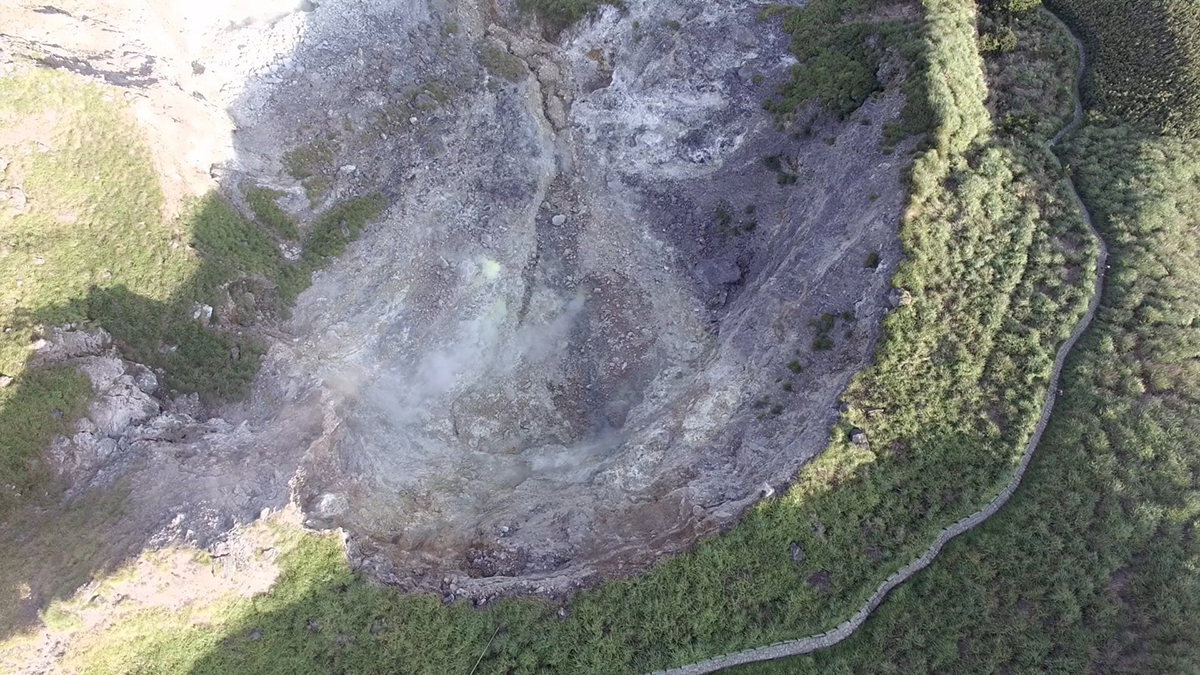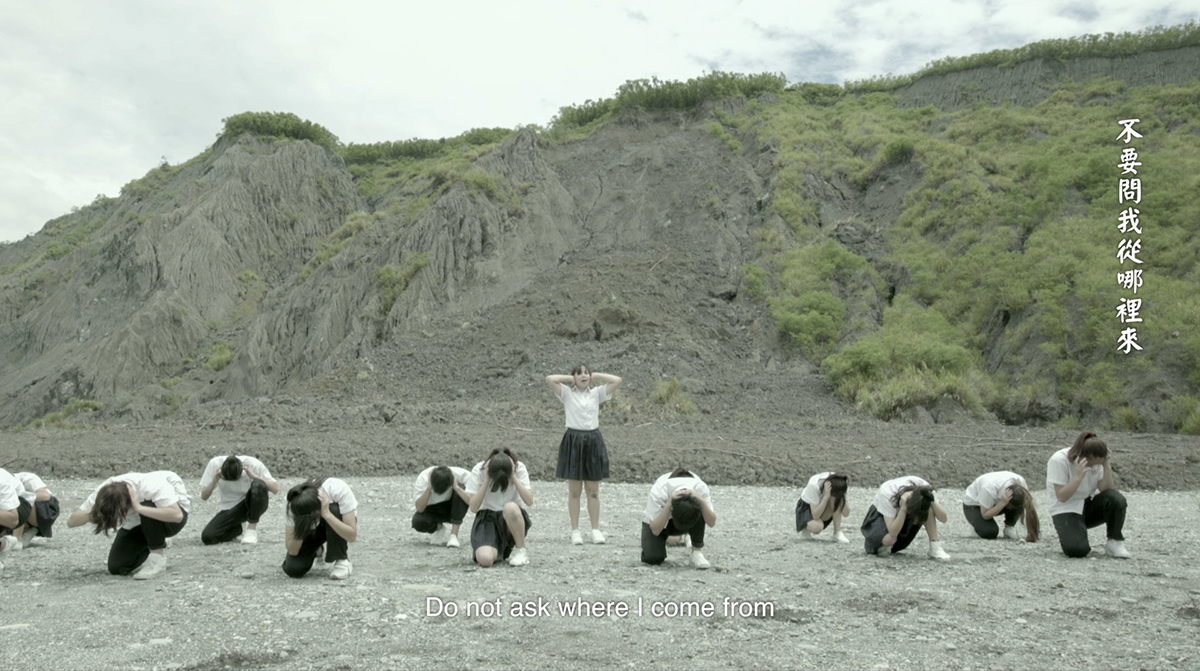Shows
Shake’s “Re-Re-positioning the Present”


The artist known as Shake undoes the image of Taiwan as tranquil islands of green mountains and fertile valleys in the exhibition “Re-Re-positioning the Present.” Turning her camera toward the main island’s rocky topography, Shake creates a visual metaphor for her homeland’s volatile history and unpredictable geopolitical standing in the world. Specifically, the mutable relationship between Taiwan and the United States, contingent upon prevailing political attitudes, provided an urgent reason for why the Taipei-based curator and former International Studio & Curatorial Program resident, Hsiang-Ning Huang, invited the artist to show in New York. Shake utilizes film, performance, animation and archival texts, all in the service of retelling the evolving narrative that is the story of Taiwan.
In Our Status Quo (2016), from the video series “The Subduction Zone,” a drone captures a smoldering, volcanic landscape. A direct result of the Eurasian Plate and the Philippine Sea Plate pressing against each other, this geography offers a suitable backdrop for which to discuss the precariousness of Taiwan’s modern-day political position caught between the West and the East. Casting a critical eye on the impact of imperialism and later neoliberalism, the narrator traces Taiwan’s colonization by the Japanese in the late 19th century to American interests in the region post-World War Two. Just as shifting tectonic plates have shaped the dramatic terrain depicted, and indeed the island as a whole, so too have the ever-fluctuating boundaries of various empires transformed Taiwan’s identity.

In the same series is Our Suite de Danses (2016), wherein national identity takes center stage. The footage features a troupe of high school students in uniform performing a patriotic song and dance against a mountainous backdrop. A leader barks orders, directing them to stop. After the highly regimented choreography and skillful acrobatics end with the students crouched on the gravel, one girl stands up and sings, “Do not ask where I come from.” The group joins in the traditional harvest song, singing, “My hometown lies far away.” The contrast between the militaristic number and the folk tune reflects a dissonance between Taiwan’s political and cultural consciousness.
As the students march out of frame and the screen fades to black, an evening scene of a mountain—this one devoid of people—illuminates the gallery wall. In Our Story (2016), a woman reminisces about village life, while also weaving in observations about “blurring the island’s identity.” Here, Shake’s cinematic storytelling merges collective memory with that of the individual. The work draws upon a shared amnesia, as exemplified when the narrator points to a “broken genealogy,” then later laments, “I forget my own way of speaking.” Remembering is thus evoked as a way for Taiwanese people to reclaim their lost identity.
An Unsinkable Aircraft Carrier (2017– ), on the other hand, comprises historical documents layered atop excerpts from Taiwanese literature, and formed a printed chronology on the wall. Article 2 of the 1895 Treaty of Shimonoseki, in which “China cedes to Japan in perpetuity and full sovereignty” the “island of Formosa” (Taiwan), sits above a page from Zhong Lihe’s The Natives (1959), where the protagonist recalls mothers telling their crying children: “The Japanese are coming! The Japanese are coming!” These fragments flank a flat-screen monitor displaying an aerial map of Kaohsiung Harbor. Looping animation reveals the aftermath of a US bomber attack on the naval port in 1944. According to Shake, for most of the post-WWII era, Taiwanese students were taught that the bombing was carried out by Japanese rather than American forces. The revisionist narrative serves as an uncomfortable reminder of how Taiwan’s history has frequently been erased and rewritten, depending on the powers that be.

Today, the Port of Kaohsiung continues to bear significance. Following the news in 2017 that the US has authorized its warships to anchor in Taiwanese ports, it appears that even in the present the island cannot quite escape its conflicted past. Hanging on the wall alongside the other texts, a passage from Wu Ming-Yi’s novel Routes in a Dream (2007) reads, “We are children of the generations that have genuinely lived through wars.” For Shake, the question of what future possibilities lay ahead for these descendants remains unanswered.
Mimi Wong is a New York desk editor of ArtAsiaPacific.
Shake’s “Re-Re-positioning the Present” is on view at International Studio & Curatorial Program’s Project Space in New York until February 16, 2018.







